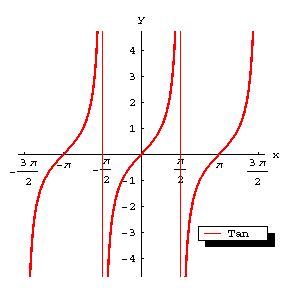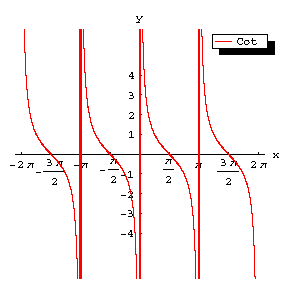|
|
| Line 1: |
Line 1: |
| − | The graph of the function <img align="absmiddle" border="0" src="https://www.encyclopediaofmath.org/legacyimages/t/t092/t092130/t0921301.png" /> (Fig.a). The curve of the [[Tangent|tangent]] is a periodic curve with period <img align="absmiddle" border="0" src="https://www.encyclopediaofmath.org/legacyimages/t/t092/t092130/t0921302.png" /> and asymptotes <img align="absmiddle" border="0" src="https://www.encyclopediaofmath.org/legacyimages/t/t092/t092130/t0921303.png" />, <img align="absmiddle" border="0" src="https://www.encyclopediaofmath.org/legacyimages/t/t092/t092130/t0921304.png" />. While <img align="absmiddle" border="0" src="https://www.encyclopediaofmath.org/legacyimages/t/t092/t092130/t0921305.png" /> varies from <img align="absmiddle" border="0" src="https://www.encyclopediaofmath.org/legacyimages/t/t092/t092130/t0921306.png" /> to <img align="absmiddle" border="0" src="https://www.encyclopediaofmath.org/legacyimages/t/t092/t092130/t0921307.png" />, <img align="absmiddle" border="0" src="https://www.encyclopediaofmath.org/legacyimages/t/t092/t092130/t0921308.png" /> grows monotonically from <img align="absmiddle" border="0" src="https://www.encyclopediaofmath.org/legacyimages/t/t092/t092130/t0921309.png" /> to <img align="absmiddle" border="0" src="https://www.encyclopediaofmath.org/legacyimages/t/t092/t092130/t09213010.png" />; thus, the curve of the tangent is composed of infinitely many separate congruent curves obtained from one another by translation over <img align="absmiddle" border="0" src="https://www.encyclopediaofmath.org/legacyimages/t/t092/t092130/t09213011.png" /> along the <img align="absmiddle" border="0" src="https://www.encyclopediaofmath.org/legacyimages/t/t092/t092130/t09213012.png" />-axis. The points of intersection with the <img align="absmiddle" border="0" src="https://www.encyclopediaofmath.org/legacyimages/t/t092/t092130/t09213013.png" />-axis are <img align="absmiddle" border="0" src="https://www.encyclopediaofmath.org/legacyimages/t/t092/t092130/t09213014.png" />. These are also the points of inflection, with inclination angle <img align="absmiddle" border="0" src="https://www.encyclopediaofmath.org/legacyimages/t/t092/t092130/t09213015.png" /> to the <img align="absmiddle" border="0" src="https://www.encyclopediaofmath.org/legacyimages/t/t092/t092130/t09213016.png" />-axis. | + | {{TEX|done}} |
| | + | The graph of the function $g=\tan x$ (Fig.a). The curve of the [[Tangent|tangent]] is a periodic curve with period $T=\pi$ and asymptotes $x=(k+1/2)\pi$, $k\in\mathbf Z$. While $x$ varies from $-\pi/2$ to $+\pi/2$, $y$ grows monotonically from $-\infty$ to $+\infty$; thus, the curve of the tangent is composed of infinitely many separate congruent curves obtained from one another by translation over $k\pi$ along the $x$-axis. The points of intersection with the $x$-axis are $(k\pi,0)$. These are also the points of inflection, with inclination angle $\pi/4$ to the $x$-axis. |
| | | | |
| | <img style="border:1px solid;" src="https://www.encyclopediaofmath.org/legacyimages/common_img/t092130a.gif" /> | | <img style="border:1px solid;" src="https://www.encyclopediaofmath.org/legacyimages/common_img/t092130a.gif" /> |
| Line 5: |
Line 6: |
| | Figure: t092130a | | Figure: t092130a |
| | | | |
| − | The curve of the tangent reflected mirror-like in the <img align="absmiddle" border="0" src="https://www.encyclopediaofmath.org/legacyimages/t/t092/t092130/t09213017.png" />-axis and translated to the left over <img align="absmiddle" border="0" src="https://www.encyclopediaofmath.org/legacyimages/t/t092/t092130/t09213018.png" /> (Fig.b) becomes the graph of the function <img align="absmiddle" border="0" src="https://www.encyclopediaofmath.org/legacyimages/t/t092/t092130/t09213019.png" /> (cf. [[Cotangent|Cotangent]]); its asymptotes are <img align="absmiddle" border="0" src="https://www.encyclopediaofmath.org/legacyimages/t/t092/t092130/t09213020.png" />; its intersections with the <img align="absmiddle" border="0" src="https://www.encyclopediaofmath.org/legacyimages/t/t092/t092130/t09213021.png" />-axis are <img align="absmiddle" border="0" src="https://www.encyclopediaofmath.org/legacyimages/t/t092/t092130/t09213022.png" /> and these points are also the points of inflection, with inclination angle <img align="absmiddle" border="0" src="https://www.encyclopediaofmath.org/legacyimages/t/t092/t092130/t09213023.png" /> with respect to the <img align="absmiddle" border="0" src="https://www.encyclopediaofmath.org/legacyimages/t/t092/t092130/t09213024.png" />-axis. | + | The curve of the tangent reflected mirror-like in the $x$-axis and translated to the left over $\pi/2$ (Fig.b) becomes the graph of the function $y=\operatorname{cotan}x=-\tan(\pi/2+x)$ (cf. [[Cotangent|Cotangent]]); its asymptotes are $x=k\pi$; its intersections with the $x$-axis are $((k+1/2)\pi,0)$ and these points are also the points of inflection, with inclination angle $\pi/4$ with respect to the $x$-axis. |
| | | | |
| | <img style="border:1px solid;" src="https://www.encyclopediaofmath.org/legacyimages/common_img/t092130b.gif" /> | | <img style="border:1px solid;" src="https://www.encyclopediaofmath.org/legacyimages/common_img/t092130b.gif" /> |
| | | | |
| | Figure: t092130b | | Figure: t092130b |
Latest revision as of 18:15, 18 September 2014
The graph of the function $g=\tan x$ (Fig.a). The curve of the tangent is a periodic curve with period $T=\pi$ and asymptotes $x=(k+1/2)\pi$, $k\in\mathbf Z$. While $x$ varies from $-\pi/2$ to $+\pi/2$, $y$ grows monotonically from $-\infty$ to $+\infty$; thus, the curve of the tangent is composed of infinitely many separate congruent curves obtained from one another by translation over $k\pi$ along the $x$-axis. The points of intersection with the $x$-axis are $(k\pi,0)$. These are also the points of inflection, with inclination angle $\pi/4$ to the $x$-axis.

Figure: t092130a
The curve of the tangent reflected mirror-like in the $x$-axis and translated to the left over $\pi/2$ (Fig.b) becomes the graph of the function $y=\operatorname{cotan}x=-\tan(\pi/2+x)$ (cf. Cotangent); its asymptotes are $x=k\pi$; its intersections with the $x$-axis are $((k+1/2)\pi,0)$ and these points are also the points of inflection, with inclination angle $\pi/4$ with respect to the $x$-axis.

Figure: t092130b
How to Cite This Entry:
Tangent, curve of the. Encyclopedia of Mathematics. URL: http://encyclopediaofmath.org/index.php?title=Tangent,_curve_of_the&oldid=11859
This article was adapted from an original article by Yu.A. Gor'kov (originator), which appeared in Encyclopedia of Mathematics - ISBN 1402006098.
See original article
